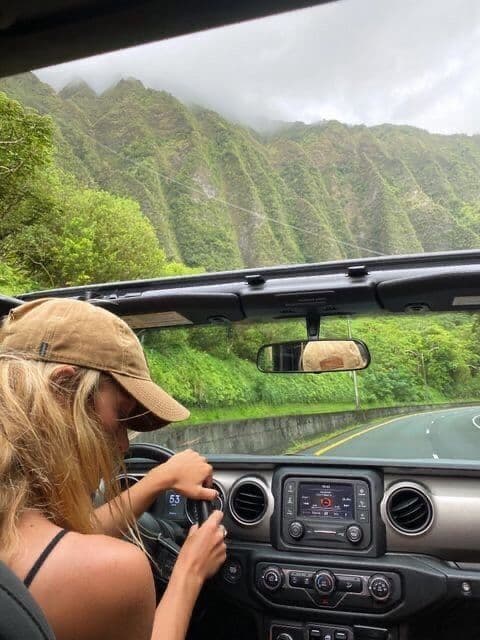
Part 1: Beyond Uber: Safer Alternatives for Solo Travelers in 2025
You've just landed in Mexico City at 1AM. The taxi line snakes endlessly, and your Uber app flashes "2x surge pricing." A man with a laminated "taxi license" approaches, but his ID badge is a blurry photocopy. You're alone, jet-lagged, and hyperaware of your luggage. This is the moment ridesharing was supposed to fix—so why does it still feel like a gamble?
Apps like Uber and Didi promised safety through screens: license plate checks, driver ratings, GPS tracking. For solo travelers—especially women, LGBTQ+ adventurers, or those visibly "foreign"—this digitized trust became a lifeline. But cracks are showing:
- Surge pricing traps: A solo ride from Berlin's Berghain club at 4AM costs €75—the same as a hostel bed for three nights.
- Ghost cars in tourist zones: Bangkok and Istanbul see fake Uber drivers lurk outside airports, preying on app confusion.
- Ratings aren't armor: A 2023 Solo Travel Safety Report found 12% of female riders experienced harassment even in "5-star rated" rides.
Ridesharing didn't kill the dangers of solo travel; it digitized them.

The False Security Blanket
What made ridesharing revolutionary wasn't the technology—it was the promise. The promise that you'd never be stranded, never be scammed, never be vulnerable. But the reality? In 2024, ridesharing companies reported over 4,000 safety incidents globally. The facade is cracking.
When a driver cancels on you in Barcelona's Gothic Quarter at midnight because your route isn't profitable enough, or when your Moscow Yandex driver demands cash instead of the app payment, you realize: technology doesn't eliminate vulnerability—it just reshapes it.
When Algorithms Fail Solo Travelers
The uncomfortable truth is that ridesharing algorithms weren't built for safety—they were built for efficiency. Peak hours, popular routes, and dense neighborhoods get priority. This creates dead zones where solo travelers need help most:
- Remote hiking trail endpoints
- Small towns with limited driver pools
- Late-night routes in residential areas
- Cultural sites outside metropolitan cores
According to transportation researcher Dr. Maria Sanchez, "Ridesharing apps create transportation mirages—apparent solutions that disappear exactly when travelers are most vulnerable."
The Alternatives You've Never Googled
Cities are fighting back with niche options that rideshare giants ignore:
🇯🇵 Tokyo's Women-Only Taxis: Pink-lit cabs driven by female operators, with routes tracked via city-sanctioned apps.
🇧🇷 Rio's Favela Vans: Dollar-a-ride community shuttles (cashless via local WhatsApp groups) safer than Uber in informal neighborhoods.
🇪🇺 Europe's Midnight Trains: Sleeper cars with solo pods, departing city centers at midnight—arrive by sunrise, €30 fare includes a bed.
🇨🇦 Montreal's Bixi After Dark: 24-hour bike sharing with designated "night routes" where paths are well-lit and security cameras provide coverage.
🇲🇽 Mexico City's Atenea: Women-only bus system with emergency call buttons and security personnel, running on major routes until 2AM.
🇦🇺 Sydney's NightRide Buddies: App-based system that connects solo travelers heading in the same direction on late-night replacement buses.
🇮🇳 Delhi's Pink Auto Rickshaws: Female-driven three-wheelers that operate specifically for women travelers, with registered drivers and tamper-proof GPS.
🇵🇹 Lisbon's Tuk-Tuk Collectives: Licensed, electric tuk-tuks that use a zone-based pricing system instead of meters or surge pricing, with drivers vetted by neighborhood associations.
🇸🇬 Singapore's GrabHitch Community: Carpooling option where drivers undergo additional background checks and are often commuters themselves rather than professional drivers.
🇿🇦 Cape Town's MyCiti After Hours: Late-night bus service with dedicated security personnel at stations and roving teams on routes popular with tourists

What these alternatives share isn't technology—it's community accountability. While Uber connects strangers through algorithms, these solutions connect travelers through local networks:
Colombia's second-largest city transformed its metro system into more than transportation—it's a community safety net. Metro guardians (easily identifiable in bright vests) are stationed at every stop after 8PM. Solo travelers can request accompaniment to connecting transportation, creating human connection where ridesharing offers only a screen.
The results? A 64% reduction in tourist-targeted crime near transit hubs since 2020.
Different regions have developed unique solutions to fill ridesharing gaps:
Asia-Pacific:
Taiwan's YouBike system integrates with public transit apps, offering last-mile transportation in areas where ridesharing surge pricing often hits hardest.
Vietnam's Xeom (motorbike taxi) networks now operate through community-verified WhatsApp groups in Hanoi and Ho Chi Minh City, cutting out corporate middlemen while maintaining digital accountability.
Europe:
Amsterdam's night bus network specifically designed for solo travelers with well-lit waiting areas and onboard security personnel.
Barcelona's TMB app now includes a "solo traveler preference" that matches you with busier routes and connections that minimize waiting times in isolated areas.
Americas:
Mexico City's Atenea buses (women-only public transportation) fill critical safety gaps where ridesharing has failed female travelers.
NYC's revamped subway "Late Night Get Home Safe" program guarantees no more than 10-minute waits between 12AM-5AM on all lines.

Building Your Transportation Toolkit
Instead of relying solely on ridesharing, seasoned solo travelers recommend building a diverse transportation toolkit before arrival:
- Research women/LGBTQ+-friendly transport options specific to your destination.
- Download local transit apps before departure (when you still have secure wifi).
- Join destination-specific solo traveler groups on platforms like Facebook or Reddit for current ground transportation intel.
- Learn basic transportation vocabulary in the local language—"how much?", "too expensive", "stop here".
- Screenshot maps of public transit routes that connect major landmarks to your accommodation.
Ridesharing's greatest flaw? It makes us lazy. For solo travelers, the "right" ride isn't just about getting there—it's arriving safer, richer, and more rooted in the place you're exploring.
The best travel experiences often happen when plans fail. When your Uber cancels and you're forced to navigate the Tokyo subway, or when surge pricing pushes you to join a collectivo in Mexico City—these "disruptions" become the stories you tell for years.
So next time your rideshare app fails you in a foreign city, consider it an invitation, not an inconvenience. The alternative might just become the highlight of your journey. (Next: Part 2 dives into 7 under-the-radar transport apps designed for solo travelers, with safety audits and cost breakdowns.)